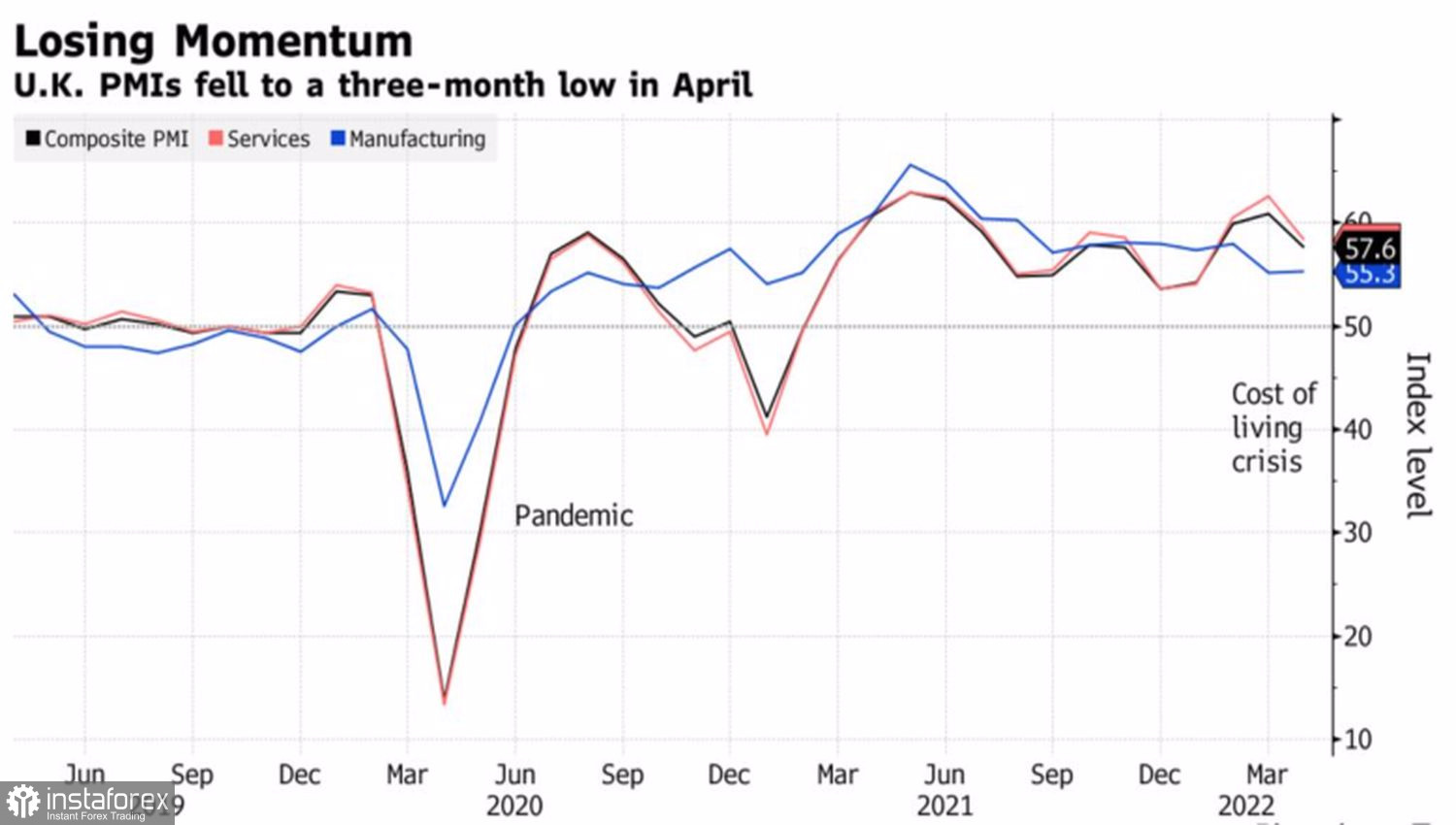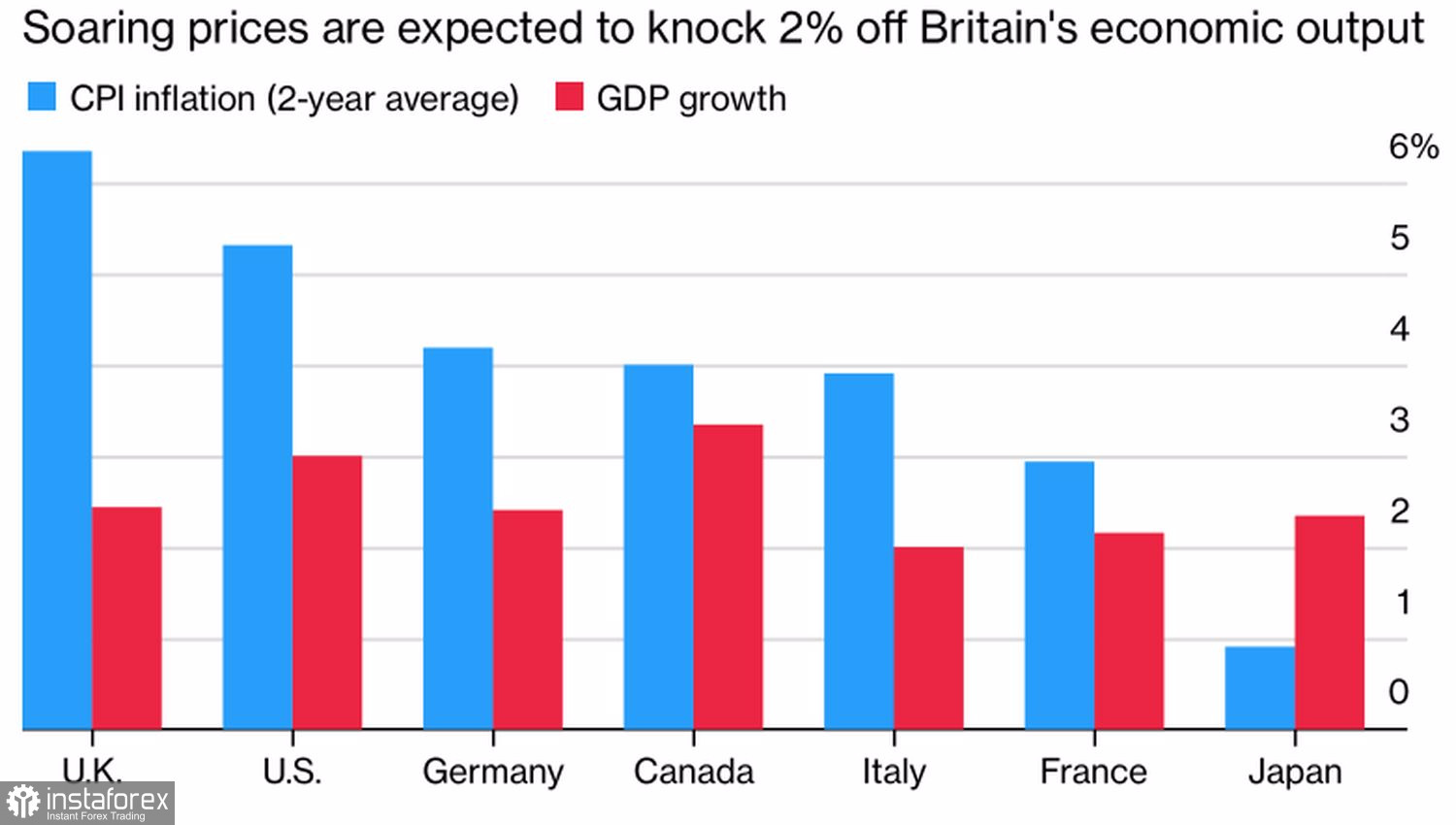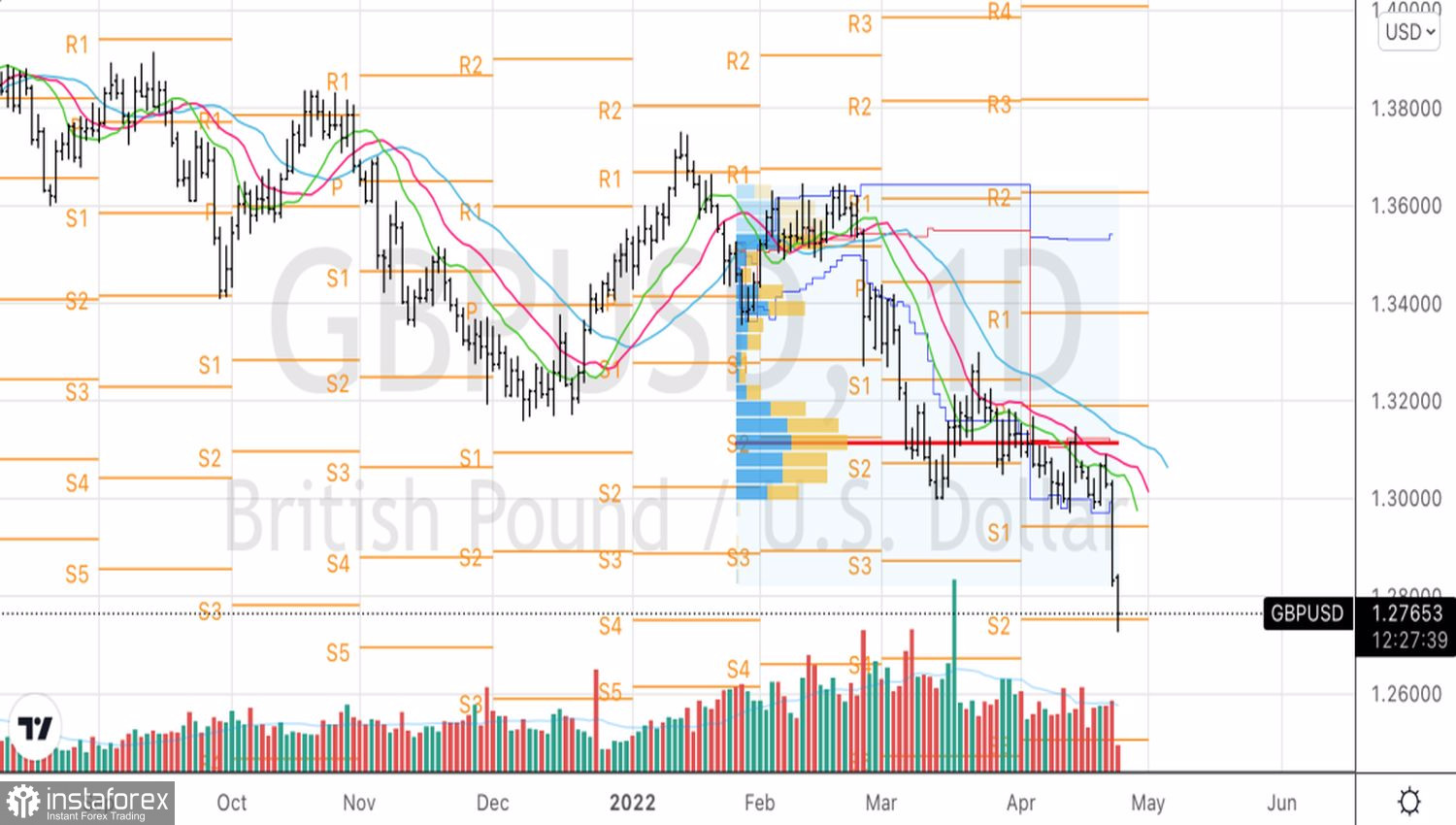What is better for the currency: when your Central Bank is marking time or took two steps forward, promised a third, and then abruptly hit the brakes? The growth of EURGBP quotes shows that investors like the first option more. While the ECB is just about to say goodbye to QE and start raising rates, the Bank of England has already raised them twice. With regard to the third act of monetary restriction in a row, a snag has come out, which makes the pound fall into the abyss.
The factor of different rates of monetary policy has a particularly sharp effect on the GBPUSD pair. The futures market is confident that at the next two FOMC meetings, the federal funds rate will increase by 100 basis points, and by the end of 2022 – up to 3%. At the same time, the disappointing statistics on the UK casts doubt on the advisability of tightening BoE's monetary policy at the third MPC meeting in a row.
In April, business activity in Britain fell to a 3-month low, retail sales sank 1.4%, which is significantly worse than Bloomberg's forecast of -0.3%, and consumer confidence fell to its lowest level since the 2008 global financial crisis. Over the past three decades, inflation, higher taxes, and skyrocketing energy bills have been pushing the UK economy into recession. Bank of England Governor Andrew Bailey also speaks about it. According to Bailey, the regulator is teetering on the brink of overcoming an excessively rapid rise in prices, on the one hand, and preventing a recession in the economy, on the other.
Dynamics of business activity in Britain

The problem of high inflation is now not discussed only by the lazy. The IMF warns that due to skyrocketing prices, Britain's GDP will suffer the greatest losses among the G7 countries. According to an authoritative organization, economic growth in the UK in 2022 and 2023 will be 1 percentage point lower than in the January forecast.
IMF forecasts for GDP and inflation in G7 countries

Thus, signs of a slowdown in the economy with a simultaneous acceleration in consumer prices, which can only be called stagflation, are forcing the Bank of England to put on the brakes after two rises in the repo rate in a row. All the more surprising is the hawkish speech of MPC member Catherine Mann. Mann began to talk about the possibility of borrowing costs rising not by 25 basis points, but by 50 basis points at the May meeting of the BoE, which surprised investors a lot.
Nonetheless, Mann's speech may not change the mood in the market in any way. Ultimately, the Bank of England depends on input data, and not on the opinion of a single member of the Monetary Policy Committee. This circumstance, coupled with weak statistics on Britain and the intention of the Fed to bring the federal funds rate to a neutral level of 2.25-2.5% as soon as possible, makes the GBPUSD quotes fall.
Technically, the departure of the pair significantly below the fair value, its lower limit, and moving averages indicates the complete dominance of the bears on the market. In such conditions, the focus should be on selling GBPUSD in case of a daily close below the support at 1.275, or on growth, followed by a rebound from the resistance at 1.279 and 1.287.
GBPUSD, Daily chart






















